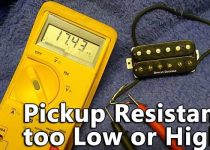How to Set Bass Boost on Amp for Superior Sound?
You just installed your brand new car audio system. The powerful amplifier is wired up. Your subwoofers are waiting to rumble. Now you see a little knob labeled “Bass Boost.” It’s tempting, isn’t it? You want to crank it all the way up.
Don’t do it. That little knob is one of the most misunderstood. It can make or break your entire sound system. It can also literally break your subwoofers. Let’s learn how to use it the right way. We want superior sound, not a costly repair bill.

Setting your amp’s bass boost requires a careful process. First, turn the bass boost knob completely off. Set your head unit’s volume to about 75% of maximum. Slowly increase the amplifier gain until you hear distortion. Then, back it off slightly until the sound is clean. Finally, add a very small amount of bass boost. A little bit goes a very long way.
# Table of Contents =>
- 1 What Is Bass Boost, Really?
- 2 The Dangers of Too Much Boost –
- 3 Start with the Right Foundation –
- 4 Tools for the Perfect Tune –
- 5 What Should You Listen For?
- 6 A Real-World Tuning Example –
- 7 Bass Boost Frequencies:
- 8 The Crucial Role of the Subsonic Filter –
- 9 Tuning for Different Music Genres –
- 10 Bass Boost vs. Your Head Unit’s Equalizer –
- 11 What About That “Loudness” Button?
- 12 Common Mistakes People Make –
- 13 A Lesson from the Competition World –
- 14 What If My Amp Doesn’t Have Bass Boost?
- 15 So, When Should You Use Bass Boost?
- 16 Final Verdict:
What Is Bass Boost, Really?
So, what does this mysterious knob actually do? It’s not a simple volume control for your bass. Think of it as a very specific equalizer. It targets one single frequency and boosts it significantly.
Most amplifiers set this frequency around 45 Hertz (Hz). This frequency provides a deep, chest-thumping bass sensation. The knob lets you add more of just that. It’s a powerful but very blunt instrument for tuning.
The Dangers of Too Much Boost –
Using too much bass boost is a recipe for disaster. It sends a clipped, or distorted, signal to your subwoofers. This clipping creates excessive heat in the sub’s voice coils.
This heat is the number one killer of speakers. You won’t just get muddy, awful-sounding bass. You’ll eventually smell something burning. That’s your subwoofer dying a slow and painful death.
My friend Mark learned this the hard way. He thought “more boost” meant “more bass.” He maxed out the knob on his 1200-watt amp. His two 12-inch subs sounded like a muddy mess for a week. Then, they went completely silent during his favorite song. The voice coils were completely fried.
He had to buy two new subwoofers. It was an expensive lesson about a small knob. We set up his new system together, the right way. His bass is now cleaner and even sounds louder. All because we used the bass boost sparingly.
Start with the Right Foundation –
Before you even touch the bass boost knob, relax. Your system needs a solid foundation first. This means setting everything else correctly. You can’t build a great house on shaky ground.
The goal is to create a clean, undistorted signal. Your amplifier’s job is to make that clean signal louder. Bass boost should be the final, tiny adjustment. It’s like adding a pinch of salt to a meal.
Tools for the Perfect Tune –
You don’t need a lot of fancy equipment. Your most important tools are your own two ears. You’ll also need some music you know very well.
Choose songs with a good range of sound. You want tracks with clean bass, clear vocals, and highs. This will help you hear any unwanted distortion. Playing a song you’ve heard a thousand times helps immensely. You know exactly how it is supposed to sound.
Step 1: Set Everything to Zero
Let’s begin the tuning process. Go to your amplifier. Turn the gain setting all the way down. Turn the bass boost knob completely off (0 dB).
If you have a remote bass knob, turn it down too. Now, go to your car’s stereo or head unit. Find the equalizer and tone controls. Set everything to “flat” or zero. Disable any “Loudness” or “Bass Enhancer” features for now.
Step 2: Find Your Head Unit’s Max Volume
This step is absolutely critical for a clean signal. We need to find your head unit’s maximum clean volume. This is the highest you can turn it up before it distorts.
Start playing a familiar, high-quality music track. Slowly turn up the volume. Listen very carefully to the speakers inside your car. At some point, you’ll hear the sound get harsh. The cymbals might get crunchy. Vocals might start to sound strained.
That point is distortion. Turn the volume down just one or two clicks. This is now your maximum listening volume. For most head units, this is around 75-85% of the total. Never go above this volume level during normal use.
Step 3: Setting the Amplifier Gain
Now it’s time to set your amplifier’s gain. The gain matches the output of your head unit. It matches it to the input of your amplifier. It is not a volume knob for your subwoofers.
Keep the head unit at its maximum clean volume. Go back to your amplifier. Very slowly, begin to turn up the gain knob. Listen closely to your subwoofer. You are listening for any change in the sound.
You want it to get louder, but stay clear. Keep turning it up until the bass sounds sloppy. You might hear a fuzzy or muddy sound. This is the gain-induced distortion. As soon as you hear it, stop. Back the knob down just a tiny bit until it’s clean again.
Step 4: Gently Introduce the Bass Boost
Your system is now properly gain-staged. Everything is balanced and clean. Only now should you consider touching the bass boost. Remember Mark’s story? We want to avoid his mistake.
Think of bass boost as a flavor enhancer. A little bit can add some nice warmth and punch. Too much will completely ruin the experience. Leave your head unit at its max clean volume.
Slowly turn the bass boost knob up a tiny bit. We’re talking about maybe 3 decibels (dB). On most dials, this is about a quarter of the way up. Now, go listen from the driver’s seat.
What Should You Listen For?
Listen to how the bass has changed. Does it sound deeper and more powerful? Or does it sound boomy and overwhelming? A little boost should make the bass feel fuller.
If the bass starts to sound like one single note of it drowns out the kick drum’s punch. If it makes your rearview mirror impossible to see. You’ve likely added way too much boost. The best setting is often just a tiny nudge from zero.
A Real-World Tuning Example –
Let’s talk about my sister’s car. She loves electronic dance music (EDM). The songs already have tons of low-frequency bass. Her single 10-inch sub sounded good, but she wanted more “feel.”
We followed these exact steps. Her head unit’s max volume was 32 out of 40. We set the gain on her amp to match that. The bass was tight and clean, but she felt it was thin. Her car’s acoustics seemed to be swallowing some punch.
We added just a tiny bit of bass boost. The dial went from 0 dB to about +4 dB. The difference was immediate. The bass notes felt fuller and had more weight. It was the “feel” she was looking for without becoming a muddy mess. We didn’t need to crank the knob to the max.
Bass Boost Frequencies:
Most amps don’t tell you this on the knob. The bass boost is centered at a specific frequency. This is almost always 45 Hz. Some higher-end amps let you change this center frequency.
Why is 45 Hz so common? It’s a sweet spot for perceived bass impact. It’s that frequency you feel in your chest. Boosting it can make a system sound more powerful. But not all music has important information at 45 Hz.
The Crucial Role of the Subsonic Filter –
If your amplifier has a subsonic filter, use it. This filter is your subwoofer’s best friend. It’s also called an Infrasonic High-Pass Filter (HPF).
It cuts off frequencies below a certain point. Your subwoofer can’t play extremely low frequencies. Trying to do so wastes energy and causes damage. This is especially true for ported subwoofer enclosures.
Set your subsonic filter to around 25-30 Hz. This protects your sub from trying to play notes it can’t. It also makes the bass it can play sound tighter. It works hand-in-hand with the bass boost. You’re boosting one frequency while cutting off harmful ones.
Tuning for Different Music Genres –
The right amount of bass boost changes with music. A “set it and forget it” approach rarely works well. Your favorite genre should guide your tuning decisions.
Let’s explore a few popular examples. This shows how one setting isn’t perfect for everything. Good tuning is about adapting to your music.
# Hip-Hop and Electronic Music –
These genres are famous for their low bass lines. The music producers often already boosted these frequencies. The songs are mixed to have a powerful low end.
For these genres, you should use very little bass boost. Sometimes, you might not need any at all. A small amount, like +3 dB, might add some warmth. Anything more will likely make the bass overpowering and sloppy. The clarity of the original track will be lost.
# Rock and Metal Music –
The bass in rock music is very different. It’s often focused on the punch of the kick drum. It’s also about the fast, articulate notes of a bass guitar. These sounds are usually higher than 45 Hz.
Boosting at 45 Hz can add weight to the kick drum. This can make the music feel more powerful. But be very careful. Too much boost will turn those fast bass guitar notes into a muddy blur. You will lose all the detail and speed.
# Jazz and Classical Music –
For these genres, accuracy is everything. You want to hear the music as it was recorded. The goal is to reproduce the sound of the instruments. An upright bass in a jazz trio should sound like a real bass.
Using bass boost here is almost always a bad idea. It will create an unnatural boom that doesn’t belong. It will completely throw off the balance of the music. For these genres, keep the bass boost set to zero. Let the quality of your equipment shine through.
Bass Boost vs. Your Head Unit’s Equalizer –
What’s the difference between amp boost and your stereo’s EQ? Your head unit’s equalizer is a much more precise tool. It gives you control over multiple frequency bands.
The bass boost is a sledgehammer. The EQ is a surgeon’s scalpel. You can often choose to boost 60 Hz or 80 Hz. This might be better for your specific car or music. You can also make smaller adjustments, like +1 dB or +2 dB.
If you have a good equalizer, try using it first. You might find that a small adjustment on your head unit’s EQ gives you a much better result. It’s a more elegant solution than the amp’s brute-force boost.
What About That “Loudness” Button?
Many stereos have a “Loudness” feature. This feature is designed to compensate for human hearing. At low volumes, our ears are less sensitive to low and high frequencies.
The loudness button boosts the bass and treble automatically. This makes the music sound fuller at quiet volumes. However, this boost decreases as you turn the volume up. You should always turn this feature OFF when setting your gains and tuning. It will interfere with your ability to find a clean signal.
Common Mistakes People Make –
Let’s recap some of the most common mistakes. Avoiding these will put you ahead of most people. You’ll be on your way to truly superior sound.
The biggest mistake is treating bass boost like volume. It is not. It is an aggressive equalizer. Cranking it up sends a destructive, clipped signal. This will destroy your subwoofers. Always remember that.
Another mistake is setting the boost before the gain. The gain structure must be set first. The gain provides a clean signal ceiling. The boost pushes a frequency up toward that ceiling. Doing it in the wrong order guarantees distortion.
Finally, people ignore their subwoofer enclosure. A ported box is tuned to a specific frequency. Using bass boost below that tuning frequency is very dangerous. The sub loses control and can easily be damaged. This is why a subsonic filter is so important.
A Lesson from the Competition World –
I once attended a major car audio competition. I saw cars with walls of subwoofers. Their systems were worth more than my entire car. I talked to one of the guys who won his category.
I asked him about his settings and expected him to say he maxed everything out. His answer surprised me. He told me his bass boost was turned off completely. Also, he used a powerful digital sound processor for tuning.
He said, “Loud, clean bass comes from efficiency.” It comes from a solid electrical system. It comes from the right enclosure and comes from perfect tuning across all frequencies. He explained that bass boost is a “crutch” for poorly designed systems. It creates problems instead of solving them.
What If My Amp Doesn’t Have Bass Boost?
Don’t worry about it at all. In fact, you might be better off. Many high-quality amplifiers don’t even include one. The manufacturers know it can be easily misused.
A lack of bass boost forces you to tune correctly. You have to rely on proper gain setting and focus on your head unit’s EQ. You choose the right crossover points. This holistic approach always yields better, more musical results. You don’t need the feature to get amazing bass.
So, When Should You Use Bass Boost?
After all these warnings, you might think it’s useless. It’s not totally useless. There are a few specific situations where it can be helpful. You just have to use it with intelligence and restraint.
Sometimes you’re listening to older, poorly recorded music. The recording itself might lack low-end frequencies. A small amount of boost can help bring it to life. It can compensate for the deficiencies of the source material.
It can also help with your vehicle’s acoustics. Every car interior has its own sonic signature. Some cars create a “null” or dead spot at certain frequencies. If your car happens to have a dip around 45 Hz, a little boost can help even things out.
Final Verdict:
The bass boost knob is one of the most powerful. It is also one of the most dangerous controls. That promises more bass, but it can easily deliver distortion. It can also deliver a repair bill for new subwoofers. The key is to approach it with caution and respect.
Always set your system’s gain structure first. Use a clean signal from your head unit. Think of the bass boost as the very last resort. It’s a final touch, not a primary tuning tool. Less is always, always more.
A small nudge of +3 dB to +6 dB is usually more than enough. Often, the best setting is 0 dB. Your goal should be clean, tight, and musical bass. You want bass that complements your music, not overpowers it. Master this, and you’ll have truly superior sound.
Last Updated on October 13, 2025 by Perry Garner


